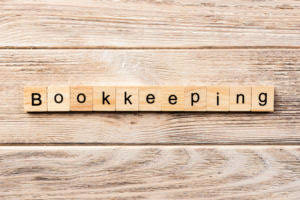
Connect compatible products so they can communicate and adjust for optimal comfort. You can choose special systems or add features to optimize your home comfort. Our unbiased reviews and content are supported in part by affiliate partnerships, and we adhere to strict guidelines to preserve editorial integrity. The editorial content on this page is not provided by any of the companies mentioned and has not been reviewed, approved or otherwise endorsed by any of these entities.
Management accountants must evaluate where these unfinished goods are in the manufacturing process and assign expenses accordingly. Process costing determines the cost of each unit based on the overall costs of manufacturing departments or stages. The inclusion of non-production costs in the computation can lead to errors.
What are the benefits of process costing?
The system is comprised of a set of forms, processes, controls, and reports that are designed to aggregate and report to management about revenues, costs, and profitability. The areas reported upon can be any part of a company, including its customers, departments, facilities, processes, products and services, research and development, and sales regions. There is no last in, first out (LIFO) costing method used in process costing, since the underlying assumption of process costing is that the first unit produced is, in fact, the first unit used, which is the FIFO concept. A process cost system (process costing) collects costs incurred in the production of a product based on the processes or departments that the product passes through on its path to completion. It can assist businesses in improving their processes in order to cut costs and offer products at more competitive pricing.
- The value of scrap, treated as normal loss, received from its sale is credited to the Process A/c.
- Along with the software fees, if you purchase the accompanying hardware you should expect to pay anywhere from $49 to $1,000 per POS register or card reader.
- (a) The process cost centres are clearly defined and all costs relating to each process cost centre are accumulated.
- A POS system will run you around $0 to $300 per month for plan/software fees.
- In a process company, factory overhead represents those costs not directly assigned to one function.
- A process costing system accumulates costs and assigns them at the end of an accounting period.
In contrast to general accounting or financial accounting, the cost-accounting method is an internally focused, firm-specific system used to implement cost controls. Cost accounting can be much more flexible and specific, particularly when it comes to the subdivision of costs and inventory valuation. Cost-accounting methods and techniques will vary from firm to firm and can become quite complex.
Cost Variations
The FIFO method involves calculating the cost of production based on the order in which materials are consumed in the production process. Under this method, the cost of the oldest materials is allocated to the first units produced. The cost of the newest materials is allocated to the most recently produced units.
Lean accounting is an extension of the philosophy of lean manufacturing and production, which has the stated intention of minimizing waste while optimizing productivity. For example, if an accounting department is able to cut down on wasted time, employees can focus that saved time more productively on value-added tasks. Let’s assume Coca cola carries out similar calculations for the labeling and packaging departments and discovers that it spent a total of $100,000 to produce 50,000 bottles in the month of May. It is crucial to involve key stakeholders, such as production managers, accountants, and IT staff, to ensure the success of the process costing system.
Use Accurate Data
Most POS software plans include a certain number of employees at each price level. If you need advanced employee management features (such as employee scheduling), your POS system may charge you for each employee in the process costing system definition system. Here are some POS cost factors and how they could impact your overall costs (both in one-time and monthly fees). If the loss is less than the normal expected loss, the difference is considered as abnormal gain.
A petroleum refinery is a perfect example of a process costing system environment since it is hard to trace the cost of a specific unit of oil as it passes through the refinery. Most iPad POS systems cost about $900-$1,500 for all the POS hardware (including the iPad) and then about $50-$100/month for the POS software. However, there is free POS software for iPad, where you only need to pay for the hardware (and the credit https://www.bookstime.com/ card processing fees). POS fees for credit card processing range from 1.5%-3.5% plus a flat fee per transaction. Businesses with a lot of small transactions or large average transaction volumes should consider interchange-plus processing for the best fee rates. The best POS systems for small businesses offer these kinds of features already built-in, affordable payment plans/hardware, and clear payment processing fees.
Which Types of Costs Go Into Cost Accounting?
(f) The process loss may arise due to wastage, spoilage, evaporation etc. The balance in the factory labor account should be zero at the end of each period. Variable speed systems require both a variable speed air conditioner or heat pump and a compatible variable speed air handler or furnace. Communication between the two units is essential for your variable speed system to run smoothly, so our units come with Trane Link Communication built in. Your product runs at different stages, or levels of output, to reach your desired temperature. All feedback, positive or negative, helps us to improve the way we help small businesses.

If the cost of raw materials frequently fluctuates, a method that considers the actual cost of materials, such as the actual cost method, may be more appropriate. However, if the cost of raw materials is relatively stable, a method like the standard cost method may be more suitable. They determine the cost flow of materials from the beginning of the production process to the end. For example, the raw materials used in the preparation stage cost $10,000.
Step 1 of 3
In many companies, each stage of the production process is usually handled by a different department. Hence, each department prepares a report that includes the three elements of process costing which are the department’s direct materials, direct labor, and manufacturing overhead. The company then combines these reports to analyze the applicable total cost of the product.

Changes to the cost accounting process should be made with caution and transparency to avoid any ethical concerns. On the other hand, if the industry is less regulated and has more flexibility, a simpler method like the standard cost method may suffice. On the other hand, if the process is more straightforward, the standard cost method may be sufficient. While it has many advantages, manufacturers should know some disadvantages of using a process costing system. Process costing determines the product’s unit cost and helps evaluate profitability, set selling prices, and make informed business decisions.
The 9 Best Corporate Credit Cards For Businesses
In this case, it is more effective to accumulate costs for a large batch of products and then distribute them to individual units produced. The presumption is that the cost of each unit is the same as the cost of any other unit, hence tracking information at the individual unit level is unnecessary. A process costing system accumulates costs when a large number of identical units are being produced. In this situation, it is most efficient to accumulate costs at an aggregate level for a large batch of products and then allocate them to the individual units produced. The assumption is that the cost of each unit is the same as that of any other unit, so there is no need to track information at an individual unit level. Coca-cola is a carbonated drink bottling company that specializes in unique flavors.
- FIFO is handy for manufacturers who produce goods with short shelf life or use materials subject to price fluctuations.
- In many companies, each stage of the production process is usually handled by a different department.
- For manufacturing with great work in progress, there will be a problem as management needs to estimate the equivalent of finished goods.
- Connect compatible products so they can communicate and adjust for optimal comfort.
- On the other hand, if the process is more straightforward, the standard cost method may be sufficient.
- You can also bring your own iPads and smartphones to use as register interfaces, kitchen display systems, customer-facing displays, and self-service kiosks, as Square software can work as a mobile app.
